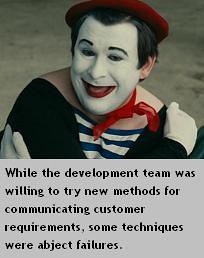The product team needs a CRM system?

Yesterday, two of my research interests, Agile and CRM, intersected during a briefing. The demo, which I’ll describe in a moment, was a great illustration of one of my pet theories: integration will be the killer feature for software in general for the next several years. CRM in particular needs these benefits of integration.
Rally Software has a nice integration between their tools, designed to support Agile development teams, and the Salesforce CRM system. Salesforce users can record enhancement requests and product feedback that are fed automatically into the requirements component of Rally’s suite of tools. Product managers then can refine this information (has anyone asked for this feature before? how does it fit into a user story? how important is it?) and add it to the backlog. The product roadmap, which now includes requests that start in the CRM system, can also have some visibility within Salesforce.
Very slick, particularly in how this example shows the value of integrating CRM with other things. As of today, CRM has a lot of untapped potential. As we discovered in the "product management tools" study earlier this year, the CRM system ranks at the bottom of requirements sources.

That just seems wrong. Salespeople, who spend their days talking to customers about their needs, should be a prime source of information for product managers. In theory, the CRM system should contain at least some information about these needs. But why not be more ambitious? CRM data should help answer many other important questions for the product group: Which features helped make sales? What missing functionality is the cause of losses to competitors? What are the most common configurations? And I’m sure you can think of 10 or 12 other questions you’d like to pose.
There’s no replacement for the kind of insight you get from direct conversations with customers. At the same time, there’s no substitute for the level of confidence you can only get from more aggregate data. Even if you’re not using Agile methods, you’d rather hear about new market trends right away, as they make themselves felt through the customer conversations stored in the CRM system, instead of waiting for the yearly customer advisory board meeting. (Or, for that matter, hearing about them much later through the other side of CRM, the support desk.)
It’ll take some further research to find out how effectively people use these sorts of bridges between CRM and the product team. In theory, at least, salespeople have more incentive to record customer requests, if they feel as though someone is listening. Product managers get more aggregate data on which to base product decisions. And CRM becomes more central to how the company operates.